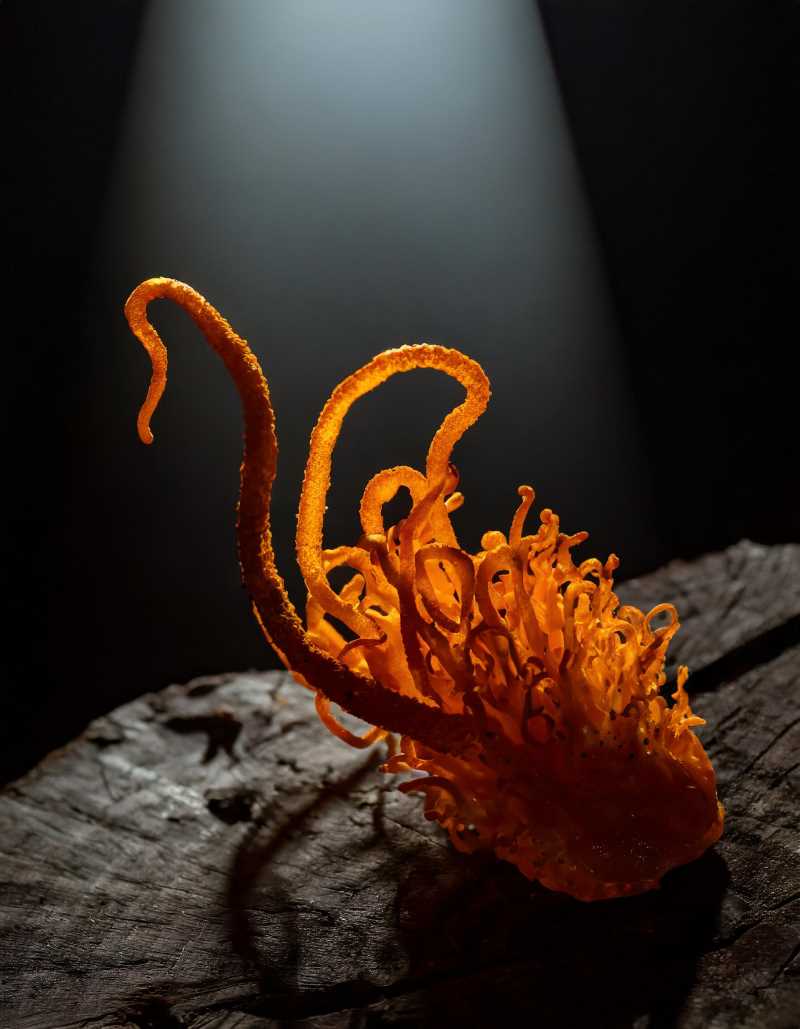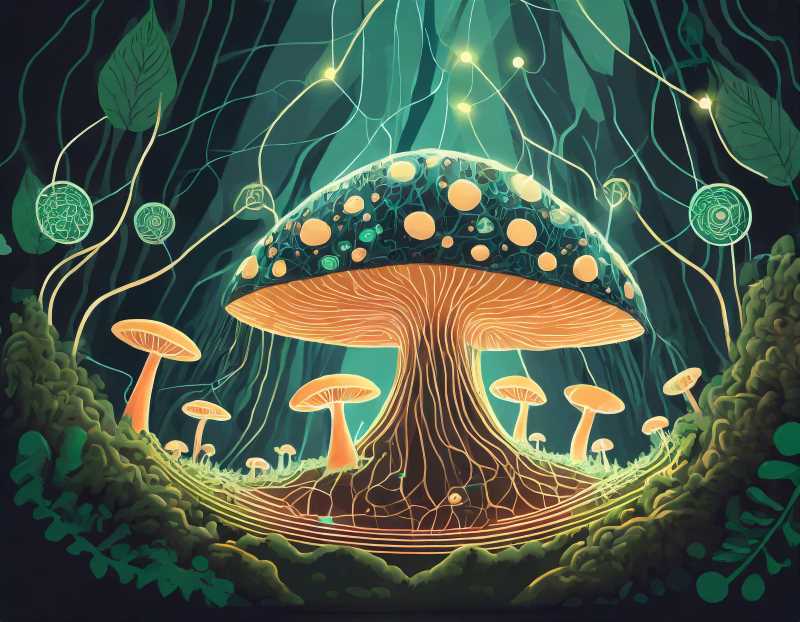How Fungi Weave “Internet of Plants” and Shape Our Future
From humble decomposers to mind-bending manipulators, fungi weave a hidden web of life, shaping ecosystems, influencing history, and holding the key to a sustainable future. Dive into their world of bioluminescent caves, mind-altering whispers, and hidden medicinal secrets.

For decades, fungi lurked in the shadows of the plant kingdom, their fascinating lives a mystery to most. But the age of the internet has brought these curious creatures into the spotlight, thanks to a dedicated tribe of mycologists – the mushroom scientists – who are tirelessly unraveling their secrets. While once mistaken for plant brethren, we now know fungi hold their own kingdom, as diverse and intriguing as any.
Unlike the sun-kissed plants, fungi forge their own paths to energy. They're master scavengers, decomposers, and even predators, thriving in almost every corner of the Earth. From the dankest depths of the forest floor to the scorching deserts, they've evolved an arsenal of ingenious feeding strategies, each shaping their unique identity and ecological role.
These versatile beings are our tireless collaborators, working behind the scenes to ensure our daily comforts. They're the secret ingredient in the fluffiness of our bread, the fizz of our beer, and the punch of our antibiotics. They churn out a cornucopia of special molecules, many with the power to heal and soothe.
But fungi's magic extends far beyond our plates and medicine cabinets. They're the unseen engines driving countless natural processes, the silent partners in the grand symphony of life. Their intricate web of interactions weaves the very fabric of ecosystems, making them a captivating subject for both science and wonder.

The “Internet of Plants”
Delving deeper into their world, we discover a captivating twist: fungi, despite their animal-like traits, share an ancient bond with plants. Some special fungi, known as mycorrhizal buddies, form intimate partnerships with plant roots, creating a symbiotic network called the “internet of plants.” This underground marvel allows them to exchange resources, helping plants resist disease, weather harsh conditions, and thrive in general.
But this vital connection is under siege. Our relentless march on ecosystems, both natural and agricultural, threatens the delicate balance of the fungal web. Just as our progress relies on interconnected networks, from the internet to intricate machines, the future of ecosystems, and even our own food security, hinges on protecting these subterranean allies.
Scientists are diligently studying the complex language of the mycorrhizal network, deciphering the biochemical signals that travel through its fungal filaments. These tiny tubes, called hyphae, intertwine with plant roots, forming a complex communication system that governs plant health, soil biodiversity, and ultimately, the entire ecosystem's performance.
These common mycorrhizal networks come in many flavors, each with its own specialization. The two main players are the arbuscular mycorrhizas, constituting tangled webs within plant roots, and the ectomycorrhizas, weaving a sheath around the root exterior. Both play crucial roles in nutrient exchange, pathogen defense, and environmental resilience.
One of the most fascinating aspects of this underground internet is its role in plant defense. When a plant faces a pathogenic threat, the mycorrhizal network carries a biochemical alarm, priming neighboring plants for battle. Studies have shown that mycorrhizal fungi can even trigger the release of volatile compounds that ward off attackers, creating a community-wide defense system.
Mycorrhizal fungi aren't just bodyguards; they're also drought-busters and salinity-slayers. Their presence helps plants cope with environmental stress, making them invaluable allies for sustainable agriculture in a changing climate. Understanding and preserving these fungal heroes is key to securing a bountiful future for generations to come.

From the Sonoran Sands to Your Dinner Plate
At the Food and Development Research Center (CIAD), scientists are studying the native mycorrhizal fungi of the Sonoran Desert, observing their partnerships with iconic plants like the fiery chiltepín pepper and the majestic agave. These desert dwellers have co-evolved with the fungal network, adapting to thrive in harsh conditions. So, the next time you marvel at the diversity of Sonoran life, remember the unseen allies woven into the very fabric of the landscape: the magnificent mycorrhizal fungi.
The story of fungi is a testament to the hidden wonders of the natural world. These humble organisms, once relegated to the fringes of science, are now recognized as crucial players of life. Their complex relationships, ingenious adaptations, and unexpected contributions extend far beyond the confines of soil and forest. Like microscopic alchemists, they whisper secrets to bacteria, forge alliances with plants, and even manipulate the minds of insects. But their transformative touch reaches far beyond the natural world, weaving itself into the complexity of human history, industry, and even medicine.
Fungi have been shaping human destinies for millennia. In ancient Egypt, bakers coaxed yeast to breathe life into dough, producing the pillowy loaves that sustained pharaohs and peasants alike. Millennia later, the humble mold Penicillium would change the course of history by giving birth to penicillin, a potent weapon against the once-dreaded bacterial scourge. But fungi haven't just been our benefactors; they've also played their part in the grand drama of human history. The ergot fungus, with its mind-altering whispers, is suspected of fueling religious fervor and witch hunts in medieval Europe. And who can forget the Vikings, who relied on fermented mushrooms to fuel their berserker rage before charging into battle?
Today, fungi continue to weave their magic in the laboratories and factories of the modern world. Their enzymes, honed for eons of decomposition, now find use in everything from biofuel production to textile processing. Mycologists are even harnessing the fungi's talent for bioremediation, using them to clean up oil spills and toxic waste sites. These tiny powerhouses are quietly revolutionizing industries, proving that nature's wisdom can provide sustainable solutions to modern challenges.
But perhaps the most exciting chapter in the fungal saga is yet to be written. Scientists are unlocking the secrets of fungal metabolites, many of which possess potent medicinal properties. From anti-cancer compounds to immune-boosting agents, the fungal pharmacopoeia offers a treasure trove of potential treatments for ailments that plague humanity. And beyond medicine, fungi offer solutions for a sustainable future. Mycorrhizal fungi can be harnessed to improve crop yields and reduce reliance on chemical fertilizers. Their ability to degrade plastics and other pollutants offers a glimmer of hope in the fight against environmental degradation.

Conclusion
The next time you stumble upon a mushroom in the damp embrace of the forest, don't dismiss it as mere mold. See it for what it truly is: a creed to the boundless ingenuity of life, ancient secrets, and a promise for a future where nature and technology move in harmonious co-creation. The humble fungus, once relegated to the shadows, is now stepping into the spotlight, ready to illuminate the path towards a healthier, more sustainable world.
For in the complex web of fungal life, we find not just sustenance and solutions, but a powerful reminder of our own interconnectedness with the natural world. And in that profound connection, perhaps, lies the key to unlocking a future where humans and fungi, bound by ancient history and shared destinies, work together to weave a life that flourishes for generations to come.




